Home>Garden Essentials>Garden Plants>What Part Of Fresh Thyme Do You Use
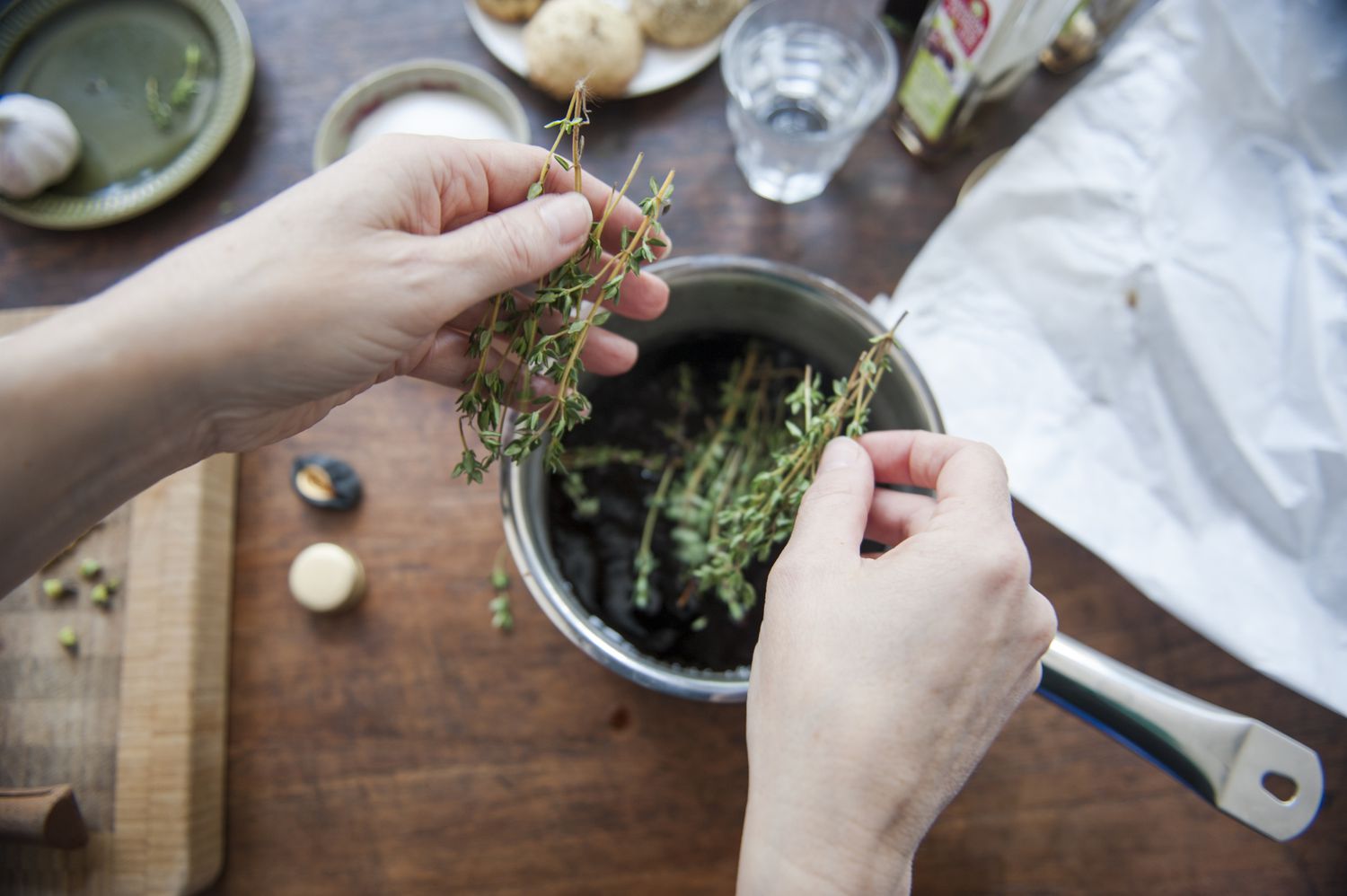

Garden Plants
What Part Of Fresh Thyme Do You Use
Modified: February 24, 2024
Discover the best ways to use fresh thyme plants in your recipes and elevate the flavors of your dishes. Learn which part of the plant brings the most flavor and aroma.
(Many of the links in this article redirect to a specific reviewed product. Your purchase of these products through affiliate links helps to generate commission for Storables.com, at no extra cost. Learn more)
Introduction
Welcome to the fascinating world of fresh thyme! As an herb known for its aromatic fragrance and incredible versatility, fresh thyme is commonly used in culinary and medicinal applications. But have you ever wondered what parts of this herb are actually used? In this article, we will explore the different parts of fresh thyme and how you can make the most of each one.
Thyme is a perennial herb that belongs to the mint family, known for its small, aromatic leaves and delicate flowers. The herb has a rich history spanning thousands of years and has been used across various cultures for both culinary and medicinal purposes. One of the reasons for thyme’s popularity is its potent flavor and aroma, which adds a delightful touch to numerous dishes.
When it comes to using fresh thyme, it’s important to understand that different parts of the plant have varying levels of flavor and fragrance. Each part can be utilized in different ways to enhance the taste and aesthetics of your dishes. Let’s delve into the various components of fresh thyme and unravel their uses.
Key Takeaways:
- Embrace the versatility of fresh thyme by utilizing its leaves, stems, and flowers to elevate your culinary creations with robust flavors, delicate aromas, and visual appeal.
- From seasoning and infusing oils to garnishing and creating herbal teas, fresh thyme offers a myriad of uses that can enhance both the taste and aesthetics of your dishes.
Read more: What Do You Use Thyme For
Understanding Fresh Thyme
Before we dive into the different parts of fresh thyme, let’s take a moment to understand the overall characteristics of this beloved herb. Fresh thyme is native to the Mediterranean region and is characterized by its small, green leaves that grow on woody stems.
Thyme is known for its distinctive fragrance and aromatic flavor. The leaves of the thyme plant contain essential oils, such as thymol, which contribute to its unique scent and flavor profile. These essential oils not only add depth and complexity to dishes but also possess antimicrobial and antioxidant properties.
Thyme comes in various varieties, with common ones including English thyme, French thyme, and lemon thyme. Each variety may have slightly different flavors and aroma profiles, but they can generally be used interchangeably in recipes.
When it comes to growing fresh thyme, you can easily cultivate it in your garden or even in pots on your windowsill. Thyme plants prefer well-draining soil, ample sunlight, and moderate watering. With proper care, you can have a bountiful supply of fresh thyme at your fingertips.
Now that we understand the basics of fresh thyme, let’s explore the different parts of the herb and discover how to best utilize them in our culinary endeavors.
Different Parts of Fresh Thyme
Fresh thyme consists of several components, each with its own unique characteristics and uses. Let’s explore the three main parts of thyme: leaves, stems, and flowers.
Leaves
The leaves of fresh thyme are undoubtedly the most commonly used part of the herb. They are small, oval-shaped, and have a deep green color. Thyme leaves are packed with flavor and fragrance, making them a vital ingredient in countless recipes.
When harvesting thyme leaves, it’s best to pluck them from the stem with your fingertips. Gently pinch the stem and slide your fingers along it, releasing the leaves as you go. Thyme leaves can be used either whole or chopped, depending on the recipe and your preference.
Stems
The stems of fresh thyme are woody, sturdy, and provide support to the leaves and flowers. While the stems are not as flavorful as the leaves, they still carry a subtle hint of thyme’s earthy essence. Stems can be used in recipes to infuse dishes with a mild thyme flavor.
When using thyme stems, it’s best to remove the leaves and crush or bruise the stems slightly to release their flavor. This can be done by simply rolling the stems between your palms or using a mortar and pestle.
Read more: What Do You Use Lemon Thyme For
Flowers
The flowers of the thyme plant may seem delicate and dainty, but they pack a surprising burst of flavor. Thyme flowers are usually small and come in shades of pale pink to lavender. These beautiful blooms are not only visually appealing but also carry a mild, floral sweetness.
Thyme flowers can be used as a garnish to add a pop of color and elegance to dishes. They can also be infused in oils, vinegars, or syrups to create unique flavor profiles. Additionally, thyme flowers can be dried and used as a fragrant addition to potpourri or herbal teas.
Now that we have explored the different parts of fresh thyme, let’s delve into the various ways you can make use of each component in your culinary creations.
Leaves
The leaves of fresh thyme are the most versatile and widely used part of the herb. They possess a robust flavor and aromatic fragrance that can enhance the taste of various dishes.
When it comes to incorporating thyme leaves into your recipes, there are multiple options available. Here are some popular uses:
Culinary Uses:
- Seasoning: Thyme leaves are commonly used as a seasoning in a wide range of dishes, including soups, stews, sauces, and marinades. They add a distinctive herbal note that complements both meat and vegetable-based recipes.
- Roasting: Sprinkling fresh thyme leaves over roasted vegetables or meats can elevate the flavors and add a delightful aroma to your dish. The heat of the oven helps release the essential oils in the leaves, resulting in a mouthwatering infusion of flavors.
- Infusions: Thyme leaves can be steeped in hot water to create a refreshing herbal tea. This infusion not only offers a soothing flavor but also provides potential health benefits, as thyme is known for its antimicrobial and antioxidant properties.
- Herb Butter: Incorporating minced thyme leaves into softened butter creates a flavorful herb butter that can be used to spread on bread, melt over grilled meats, or toss with pasta for a quick and delicious meal.
- Salads and Dressings: Fresh thyme leaves can add a burst of flavor to salads and salad dressings. They pair well with ingredients like tomatoes, cucumbers, feta cheese, and vinaigrettes, lending a fresh and aromatic touch to the dish.
Medicinal Uses:
Thyme leaves have long been recognized for their potential medicinal properties. They contain compounds, such as thymol and carvacrol, known for their antimicrobial and antifungal properties. Here are a few ways thyme leaves can be used medicinally:
- Throat Soother: Drinking thyme tea can help soothe a sore throat and alleviate cough symptoms. The antimicrobial properties of thyme can help combat bacteria or viruses that may be causing the discomfort.
- Digestive Aid: Thyme leaves can be infused in hot water to create a herbal tea that aids digestion. It can help alleviate bloating, flatulence, and indigestion.
- Antiseptic Wash: A strong infusion of thyme leaves can be used as an antiseptic wash for minor cuts, scrapes, or skin infections due to its antimicrobial properties.
Whether you’re using fresh thyme leaves in your culinary endeavors or exploring their potential health benefits, these versatile leaves are sure to enhance the flavor and provide a delightful aroma to your dishes.
Read more: What Do You Use Thyme For In Cooking
Stems
While the leaves of fresh thyme are the primary focus, the herb’s woody stems also have their own subtle flavor and can be utilized in various culinary applications. Although not as potent as the leaves, thyme stems can still contribute a hint of thyme’s earthy essence to your dishes.
Here are some ways to make use of thyme stems:
- Infused Oils: Thyme stems can be used to infuse oils, allowing you to capture their delicate flavor. Simply add the stems to a bottle of olive oil, seal it tightly, and let it sit for a few weeks. The resulting infused oil can be used to drizzle over salads, brush onto grilled vegetables or bread, or to sauté meats or vegetables.
- Broths and Soups: Thyme stems can be added to broths or soups to impart a subtle thyme flavor. Simply drop a few stems into the liquid while it simmers, and remove before serving. The stems will release their essence into the dish without overpowering the other flavors.
- Grilling: Another way to utilize thyme stems is by using them as skewers for grilling. The woody stems add a hint of thyme flavor to the ingredients while they cook on the grill. This method works particularly well for small pieces of meat, fish, or vegetables.
- Fragrant Smoke: Dried thyme stems can be added to a hot grill or barbecue to create fragrant smoke. This imparts a unique flavor to the food being cooked, making it even more appetizing.
When it comes to using thyme stems, it’s essential to remember that while they can infuse dishes with flavor, they can be quite woody and tough to eat. It’s best to remove the stems before serving to ensure a pleasant dining experience.
With a little creativity, you can find unique ways to make the most of fresh thyme stems. Their subtle essence adds depth to your dishes and elevates your culinary creations to new heights.
Flowers
While often overlooked, the delicate flowers of fresh thyme offer a surprising burst of flavor and visual appeal. Thyme flowers have a mild and floral sweetness that can enhance the taste and appearance of various dishes. Here are some ways to make use of these beautiful blooms:
- Garnish: Thyme flowers can be used as a garnish to add a pop of color and elegance to your culinary creations. Sprinkle the flowers over salads, roasted vegetables, or even dessert dishes to give them a visually appealing finishing touch.
- Infusions: Thyme flowers can be used to infuse oils, vinegars, or syrups. Place a few fresh thyme flowers in a bottle filled with your preferred base, such as olive oil or white vinegar, and let them steep for a few weeks. The resulting infusion will carry the subtle floral flavor, allowing you to create unique dressings, marinades, or drizzles.
- Herbal Teas: Dried thyme flowers can be steeped in hot water to create a fragrant and soothing herbal tea. The gentle floral notes add a pleasant touch to the tea, making it a delightful beverage that can be enjoyed any time of the day.
- Potpourri: Dried thyme flowers can also be used to create fragrant potpourri. Mix them with other aromatic herbs or flowers to create a customized blend that adds a refreshing scent to your home.
- Cocktails: The delicate flavor of thyme flowers can be infused into cocktails by muddling a few flowers with other ingredients or using them as a decorative garnish. They add an elegant touch and a subtle floral note to your favorite drinks.
Thyme flowers not only provide a delightful flavor to your dishes but also add a touch of beauty and elegance. Their gentle sweetness and floral aroma make them a unique and versatile ingredient that will undoubtedly impress your family and guests.
Remember to harvest thyme flowers when they are at their peak, just as they begin to open. This is when they possess the most flavor and vibrant color. Enjoy exploring the countless ways you can incorporate thyme flowers into your culinary adventures!
Uses of Fresh Thyme Parts
Each part of fresh thyme – leaves, stems, and flowers – has its own distinct characteristics and uses. By utilizing these different parts, you can make the most of the herb’s flavor and fragrance in various culinary creations. Let’s explore the uses of each thyme component:
Fresh Thyme Leaves
The leaves of fresh thyme are incredibly versatile and widely used in cooking. They add a robust flavor and aroma to a wide range of dishes. Here are some popular uses for fresh thyme leaves:
- Seasoning: Thyme leaves are commonly used as a seasoning in soups, stews, sauces, and marinades. They complement both meat and vegetable-based recipes.
- Roasting: Sprinkle fresh thyme leaves over roasted vegetables or meats to elevate their flavors and add a delightful aroma.
- Infusions: Steep thyme leaves in hot water to create a refreshing herbal tea that offers potential health benefits.
- Herb Butter: Incorporate minced thyme leaves into softened butter to create a flavorful herb butter that can be used in various dishes.
- Salads and Dressings: Add fresh thyme leaves to salads or use them to enhance the flavor of salad dressings.
Read more: What To Do With Fresh Thyme And Rosemary
Fresh Thyme Stems
The woody stems of fresh thyme may not be as flavorful as the leaves, but they still have their uses. Here are some ways to make the most of fresh thyme stems:
- Infused Oils: Use thyme stems to infuse oils, adding a delicate thyme flavor to dressings, marinades, and sautés.
- Broths and Soups: Add thyme stems to broths or soups to impart a subtle thyme flavor.
- Grilling: Use thyme stems as skewers for grilling to infuse a hint of thyme into grilled meats, fish, or vegetables.
- Fragrant Smoke: Add dried thyme stems to a hot grill or barbecue to create fragrant smoke that imparts a unique flavor to the food being cooked.
Fresh Thyme Flowers
Thyme flowers may be small, but they offer a delicate and distinctive flavor. Here are some ways to utilize fresh thyme flowers:
- Garnish: Use thyme flowers as a visually appealing garnish to add color and elegance to salads, roasted vegetables, or desserts.
- Infusions: Infuse thyme flowers in oils, vinegars, or syrups to create unique dressings, marinades, or drizzles.
- Herbal Teas: Steep dried thyme flowers in hot water to create a fragrant and soothing herbal tea.
- Potpourri: Combine dried thyme flowers with other aromatic herbs or flowers to create a fragrant potpourri for your home.
- Cocktails: Muddle thyme flowers to infuse their flavor into cocktails or use them as a decorative garnish.
By making use of all the parts of fresh thyme – leaves, stems, and flowers – you can unlock its full potential and create dishes that are bursting with flavor and fragrance. So go ahead, experiment, and enjoy the versatility of this incredible herb!
Fresh Thyme Leaves Uses
Fresh thyme leaves are incredibly versatile and widely used in culinary creations for their robust flavor and aromatic properties. The leaves of thyme can elevate the taste of various dishes and are an essential herb in many cuisines. Here are some popular uses for fresh thyme leaves:
Seasoning:
One of the primary uses of fresh thyme leaves is as a seasoning in a wide range of dishes. The leaves add a distinctive herbal note that complements both meat and vegetable-based recipes. Whether you’re cooking a hearty stew, a flavorful sauce, or a marinade for grilling, fresh thyme leaves can enhance the overall taste profile and add depth to your creations.
Read more: How To Use Fresh Thyme
Cooking:
Fresh thyme leaves are a wonderful addition to cooked dishes. The leaves can be added to soups, stocks, and sauces to infuse them with earthy and aromatic flavors. When preparing roasts, simply sprinkle some fresh thyme leaves over the meat before cooking to impart a delightful aroma and bring out the savory notes.
Herb Blends:
Thyme leaves are often included in various herb blends and spice mixes. From French herbs de Provence to Italian seasoning, thyme leaves add their unique touch to these culinary blends. You can also create your own customized blends by combining fresh thyme with other herbs like rosemary, oregano, and basil.
Infused Oils and Vinegars:
Another way to use fresh thyme leaves is by infusing them in oils and vinegars. This process extracts the distinctive flavor and aroma of thyme, allowing you to create flavored oils and vinegars that can be drizzled over salads, pasta, or grilled vegetables. The infusion can be achieved by adding fresh thyme leaves to a bottle of oil or vinegar and allowing it to infuse for a couple of weeks.
Baking:
Thyme leaves can also be incorporated into baking. They can be added to bread dough or incorporated into pizza dough for a unique herbed twist. Thyme leaves pair well with cheese-based dishes like quiches, tarts, and savory bread puddings.
The uses of fresh thyme leaves are truly versatile, allowing you to experiment and create flavorful dishes across a wide range of cuisines. So, next time you’re cooking, don’t forget to reach for those fresh thyme leaves to add a touch of aromatic indulgence to your culinary masterpieces.
Fresh Thyme Stems Uses
While fresh thyme leaves might be the star of the show, the woody stems of thyme also have their uses in the culinary world. Although not as flavorful as the leaves, thyme stems can still contribute subtle hints of thyme’s earthy essence to your dishes. Here are some popular uses for fresh thyme stems:
Infused Oils:
Thyme stems can be utilized to infuse oils, allowing you to capture their delicate flavor. To make thyme-infused oil, simply add the stems to a bottle of olive oil or another neutral oil, seal it tightly, and let it sit for a couple of weeks. The resulting infused oil will carry the subtle essence of thyme, which can be used to dress salads, drizzle over vegetables, or flavor sautés.
Soups and Stews:
Thyme stems can be used to add a gentle thyme flavor to broths, soups, and stews. The woody stems are ideal for infusing a subtle thyme essence into the liquid as it simmers. Just remember to remove the stems before serving to avoid any woody textures in the dish.
Grilling:
Thyme stems can be used as skewers for grilling meats, fish, or vegetables. The woody stems add a hint of thyme flavor as the ingredients cook. This method works particularly well for small pieces of food, allowing you to infuse them with a delicate thyme essence while they develop a beautiful char on the grill.
Read more: What Is Thyme Used For
Fragrant Smoke:
If you have dried thyme stems, they can be added to a hot grill or barbecue to create fragrant smoke. As the stems burn, they release a delightful aroma that imparts a unique flavor to the food being cooked. This technique can elevate your grilled dishes and bring out the best in your ingredients.
Remember that when using thyme stems, it’s important to remove them before serving, as they can be quite woody and tough to chew. By exploring the uses of fresh thyme stems, you can add a subtle thyme flavor to your dishes and experiment with different cooking techniques to enhance the overall taste experience.
Fresh Thyme Flowers Uses
While often overlooked, the delicate flowers of fresh thyme offer a delightful burst of flavor and visual appeal. The flowers of thyme have a mild and floral sweetness that can enhance both the taste and appearance of various dishes. Here are some popular uses for fresh thyme flowers:
Garnish:
One of the most straightforward and visually appealing uses for fresh thyme flowers is as a garnish. Sprinkle the flowers over salads, roasted vegetables, or even desserts to add a pop of color and an elegant touch. The delicate blooms will lend a touch of beauty to your creations and make them even more appetizing.
Infusions:
Fresh thyme flowers can be used to infuse oils, vinegars, or syrups, allowing you to capture the subtle floral flavor and aroma. Add a few fresh thyme flowers to a bottle of olive oil or vinegar, seal it, and let it sit for a couple of weeks. The resulting infusion can be used to dress salads, drizzle over grilled meats or vegetables, or as a flavorful base for marinades and dressings.
Herbal Teas:
Steeping dried thyme flowers in hot water creates a fragrant and soothing herbal tea. The gentle floral notes of the flowers add a pleasant and soothing touch to the tea, making it a delightful beverage to enjoy at any time of the day. Thyme tea is known for its potential health benefits and can be enjoyed on its own or combined with other herbal ingredients.
Potpourri:
Dried thyme flowers can be added to potpourri blends to create a refreshing and fragrant mix for your home. Combine them with other aromatic herbs or flowers, such as lavender or rose petals, to create a customized potpourri blend that will add a pleasant scent to any room.
Cocktails:
The delicate flavor and visual appeal of fresh thyme flowers make them a wonderful addition to cocktails. Muddle a few flowers with other ingredients to infuse their flavor into your favorite drinks or use them as a decorative garnish. Thyme flowers can add an elegant touch and a subtle floral note to cocktails, making them even more enjoyable.
Fresh thyme flowers offer a surprising burst of flavor and beauty to your dishes and beverages. Whether you’re using them as a garnish, infusing them into oils or teas, or incorporating them into potpourri or cocktails, these delicate blooms are sure to leave a lasting impression.
Conclusion
Fresh thyme is a wonderful herb with a rich history and an incredible range of uses. Understanding the different parts of thyme – leaves, stems, and flowers – allows you to maximize its flavor and fragrance in your culinary adventures.
The leaves of fresh thyme are the most commonly used part of the herb, with their robust flavor and aromatic fragrance. They can be used as a versatile seasoning in countless dishes, added to soups and stews, infused in oils, or incorporated into herb blends. Thyme leaves bring a depth of flavor to your recipes and elevate your culinary creations to new heights.
The woody stems of thyme, while less flavorful than the leaves, still have their contributions in the kitchen. They can be used to infuse oils or vinegar, add a subtle thyme flavor to soups, or create fragrant smoke when grilling. With creativity, thyme stems can enhance the taste and aroma of your dishes in unique ways.
The delicate flowers of fresh thyme offer a surprising burst of flavor and visual appeal. They can be used as a beautiful garnish, infused in oils or vinegars, added to herbal teas, or incorporated into potpourri. Thyme flowers bring an elegant touch and a delightful floral essence to your culinary creations.
By embracing the uses of each part of fresh thyme, you can realize the herb’s full potential. Experimenting with these different components allows you to explore a variety of flavors, aromas, and culinary possibilities.
So, the next time you find yourself in the kitchen with fresh thyme in hand, remember to savor the leaves, harness the essence of the stems, and appreciate the delicate beauty of the flowers. Let your creativity flow and enjoy the delightful, aromatic journey that fresh thyme can take you on.
Frequently Asked Questions about What Part Of Fresh Thyme Do You Use
Was this page helpful?
At Storables.com, we guarantee accurate and reliable information. Our content, validated by Expert Board Contributors, is crafted following stringent Editorial Policies. We're committed to providing you with well-researched, expert-backed insights for all your informational needs.
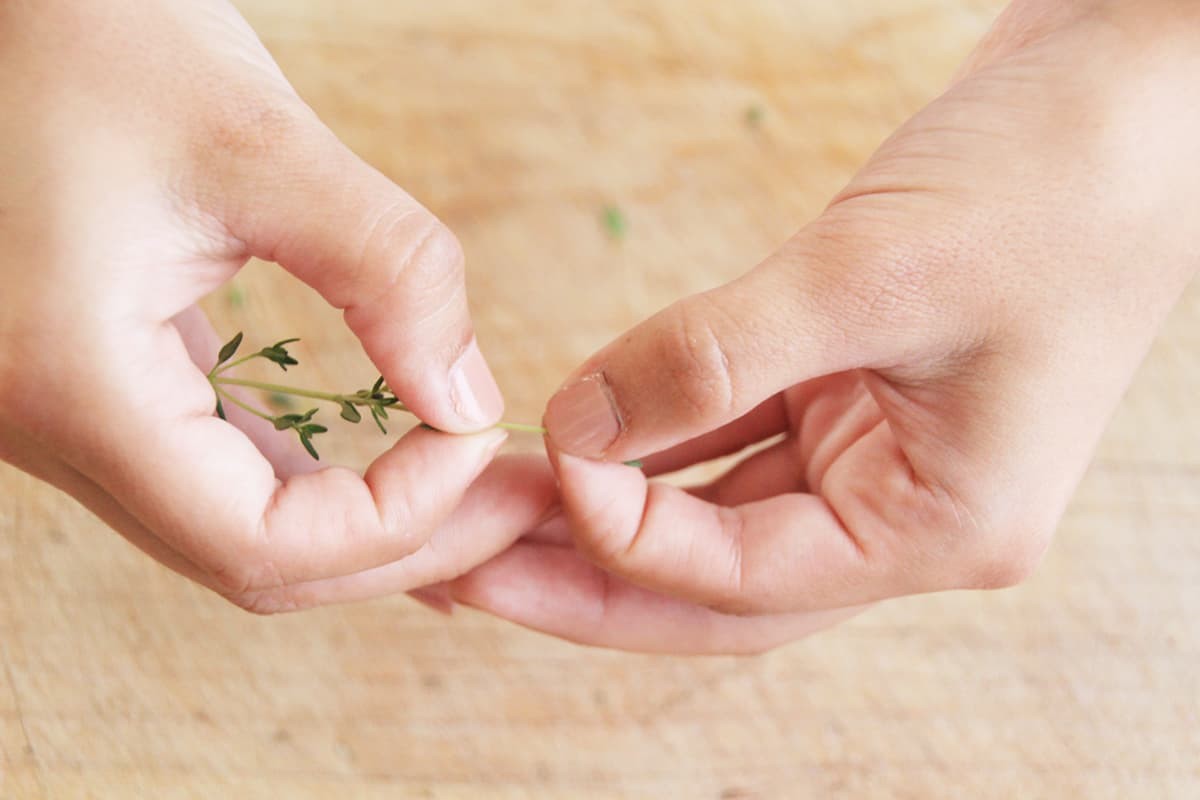
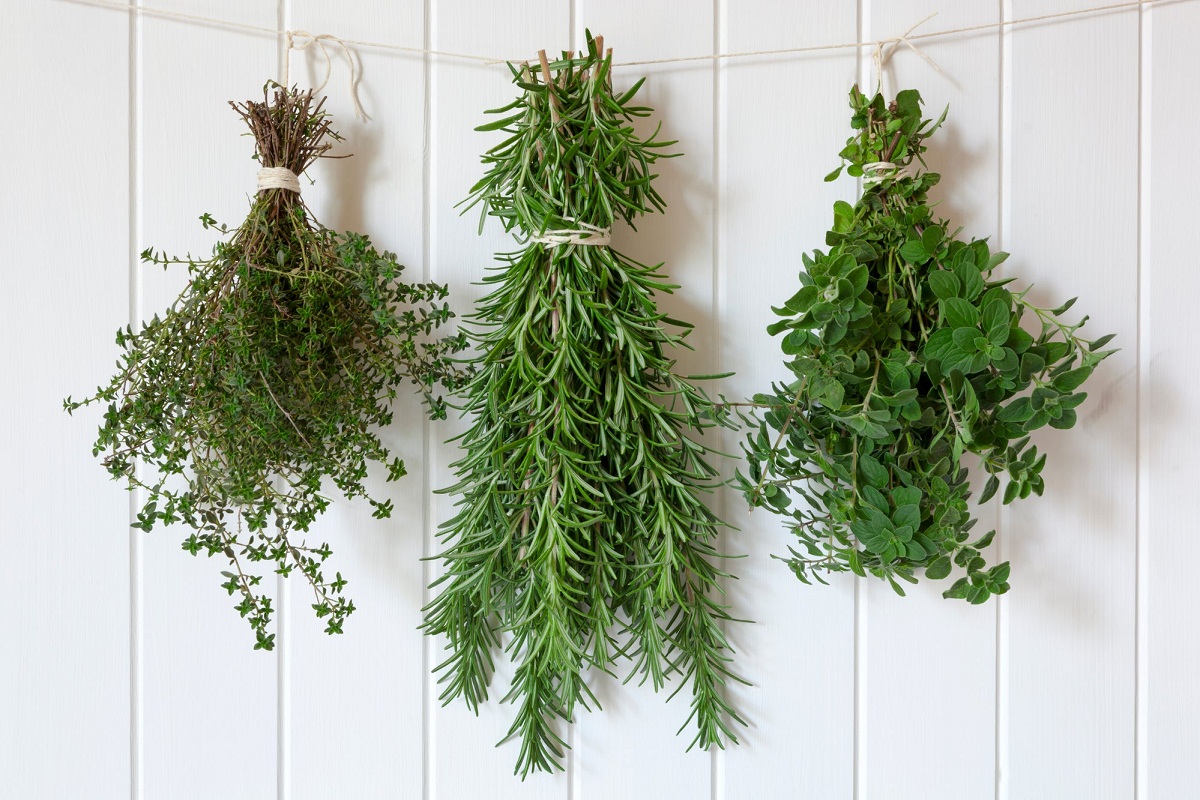
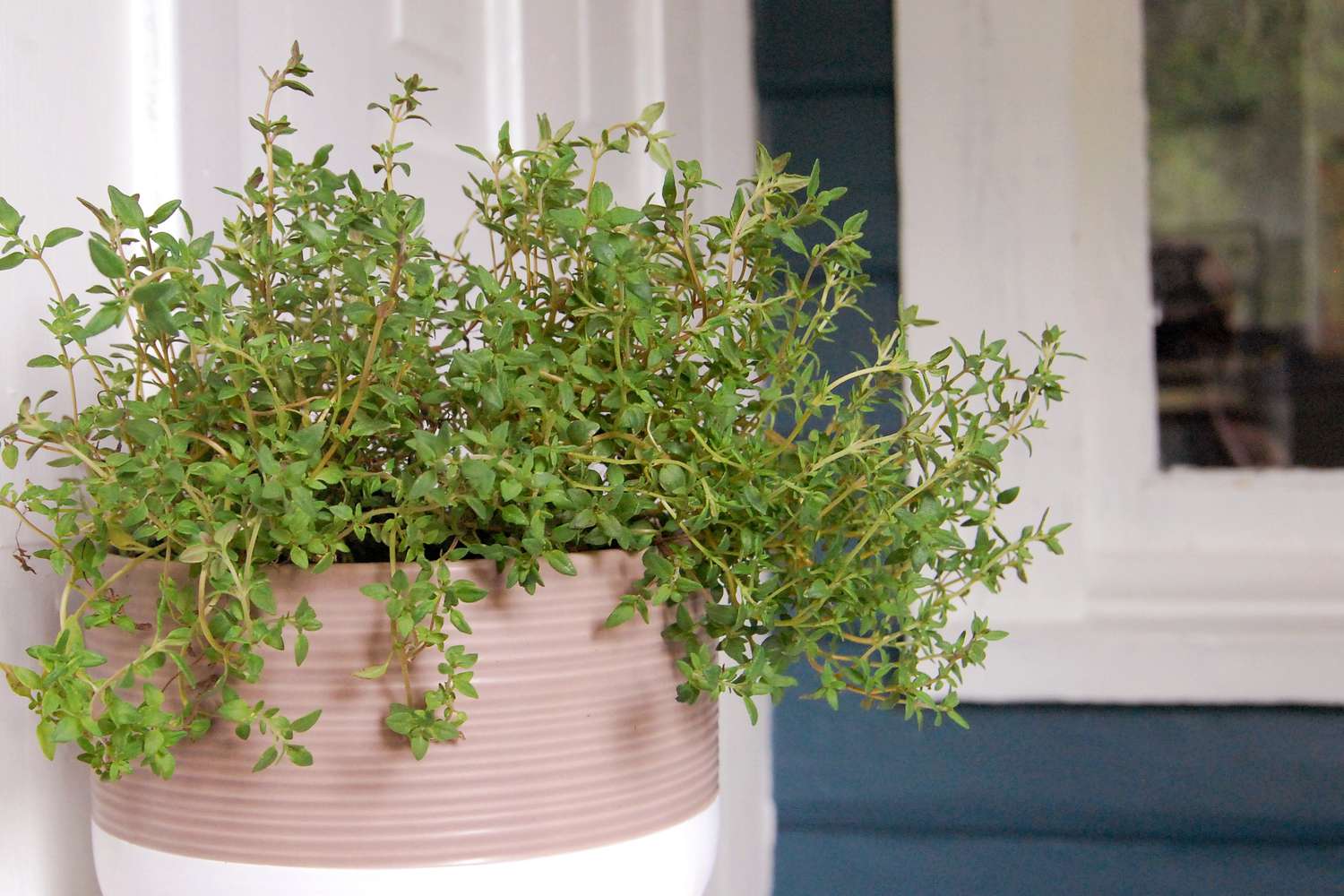
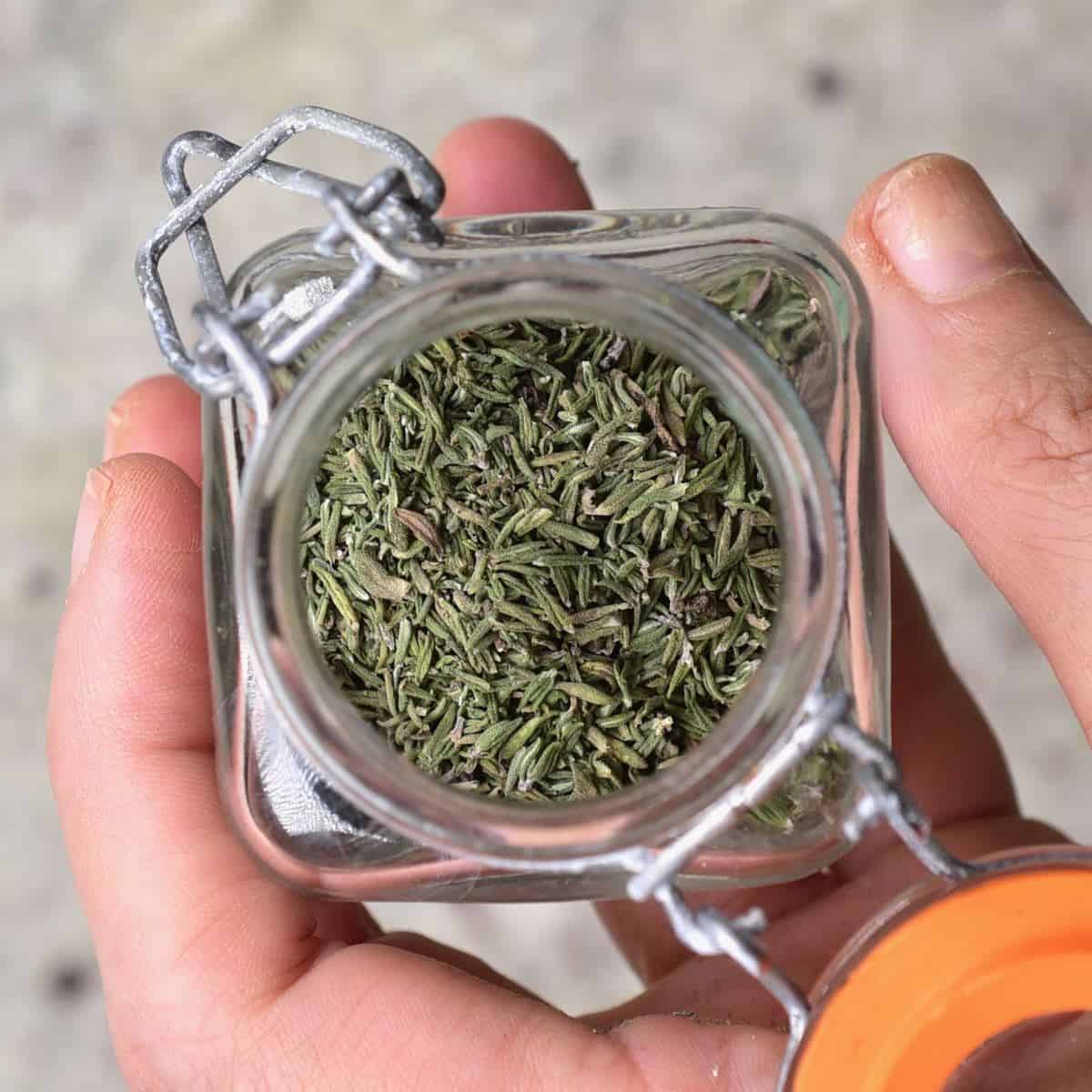
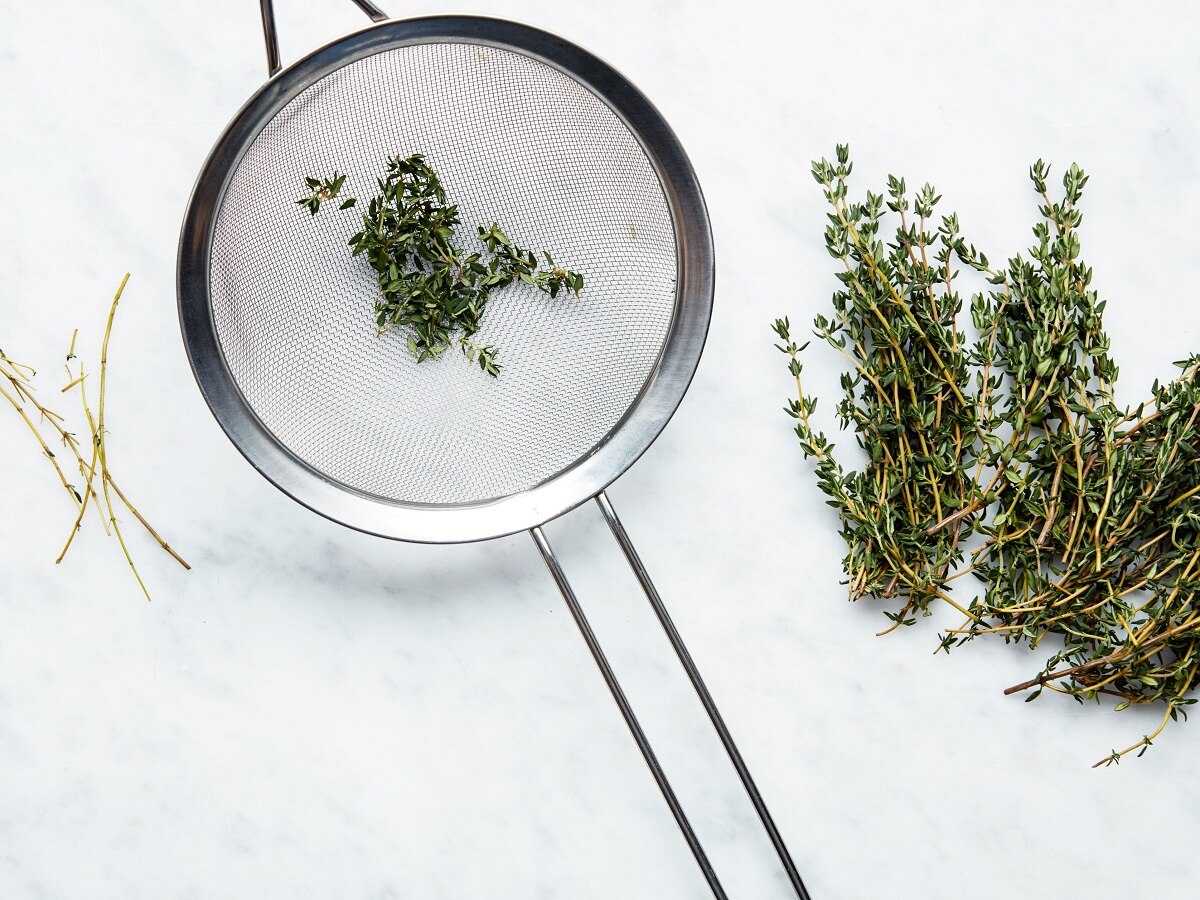
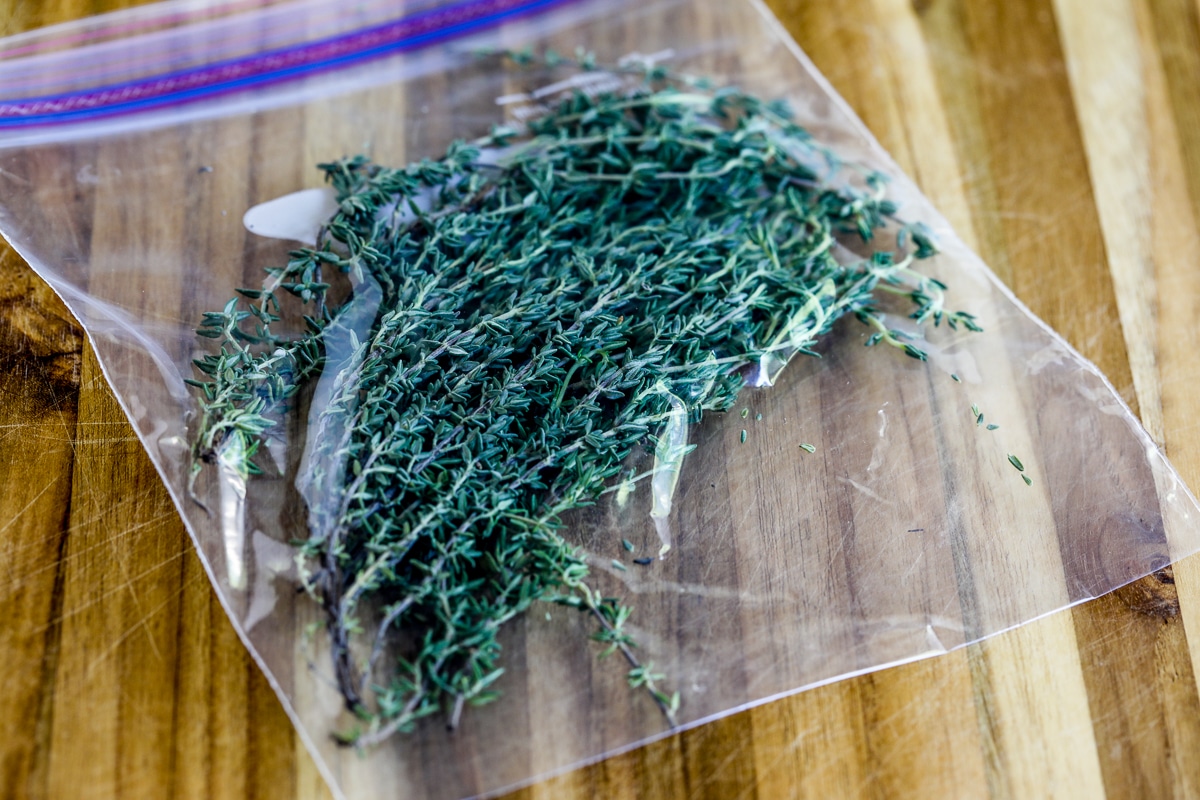
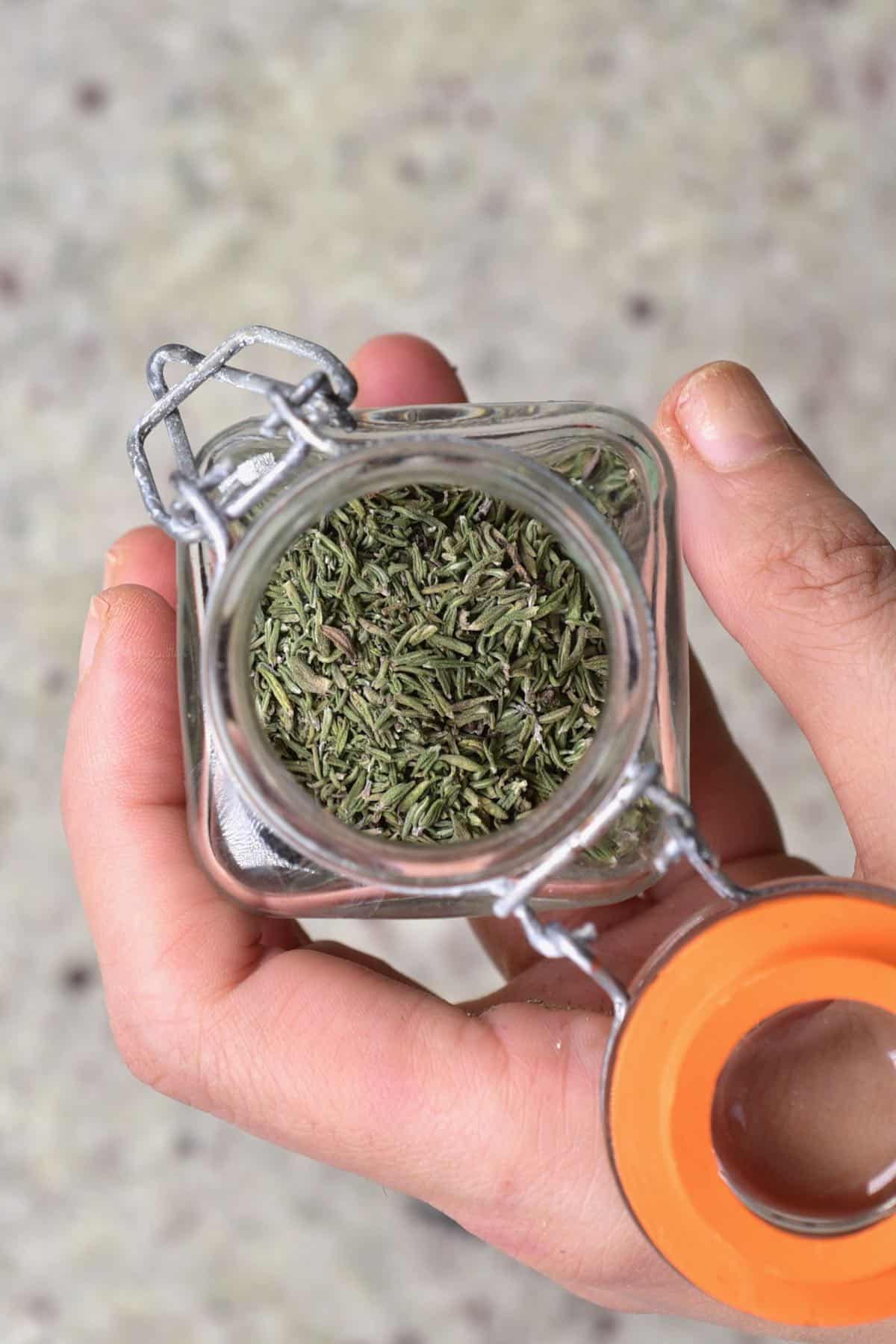
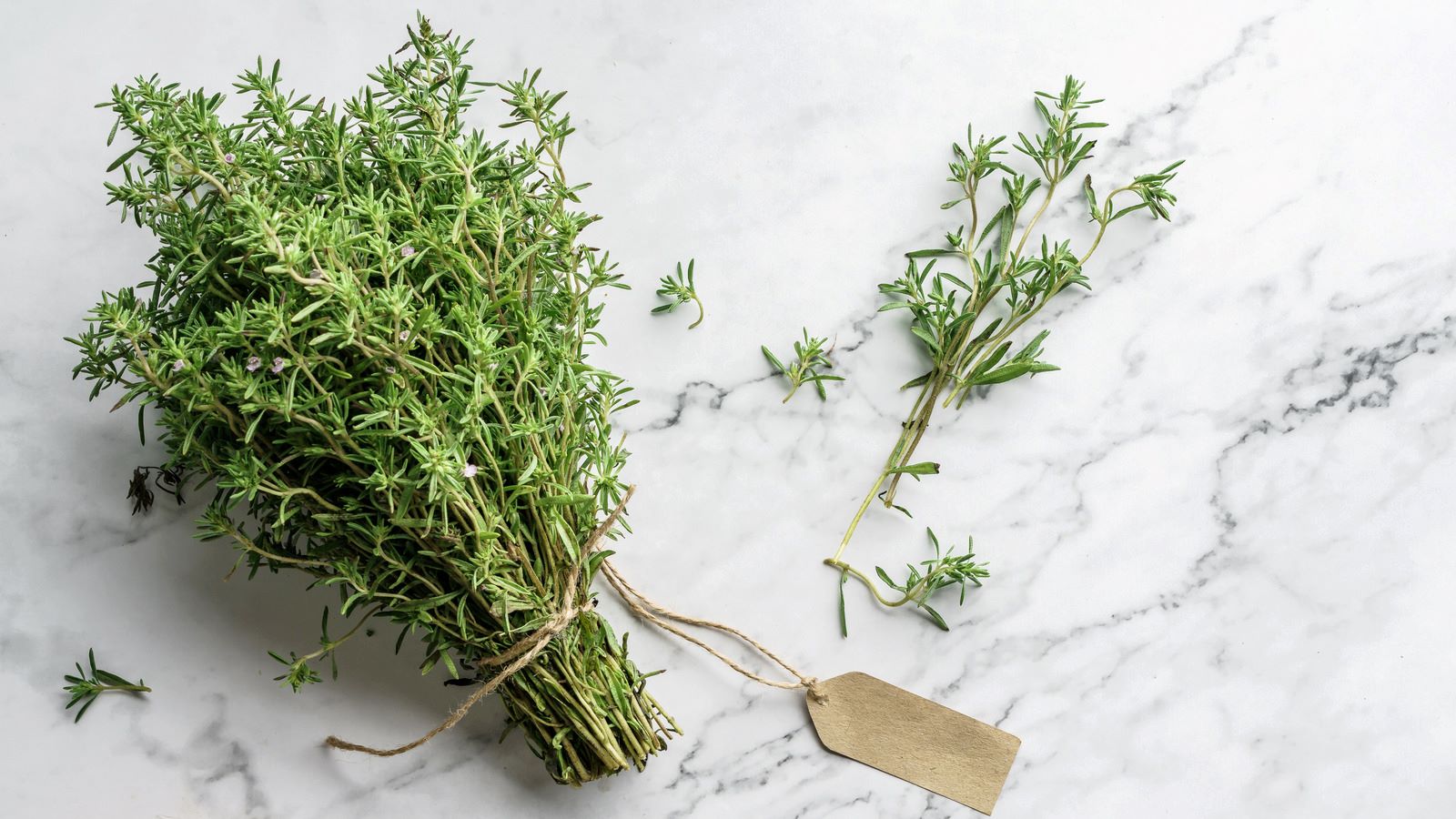

0 thoughts on “What Part Of Fresh Thyme Do You Use”